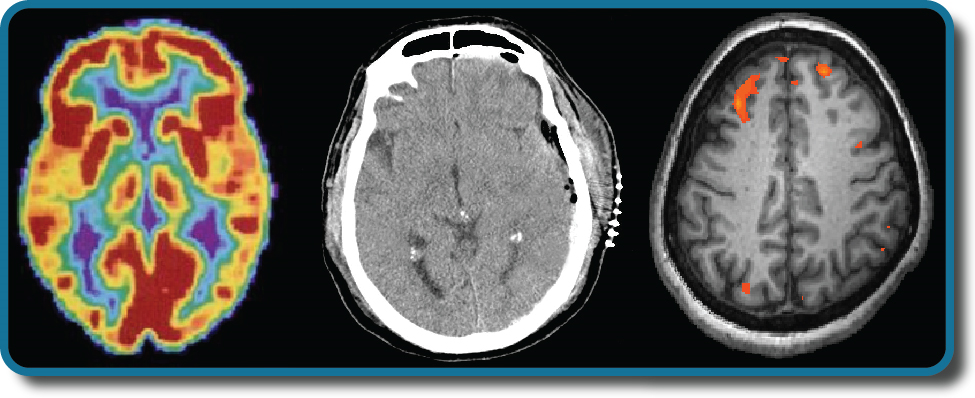3.1:《生物心理学前奏》
- Page ID
- 203449
学习目标
- 解释构成行为基础的生物学机制

你有没有拆开过一台设备来看看它是如何工作的? 我们中的许多人已经这样做了,无论是尝试修理还是仅仅为了满足我们的好奇心。 设备的内部工作原理通常与外部用户界面不同。 例如,当我们调高手机的音量时,我们不会考虑微芯片和电路;相反,我们会考虑让音量恰到好处。 同样,人体的内部运作通常与这些运作的外部表达截然不同。 心理学家的工作是找到它们之间的联系——例如,弄清楚发射数百万个神经元是如何成为一种想法的。
本章力求解释构成行为基础的生物学机制。 这些生理和解剖学基础是心理学许多领域的基础。 在本章中,您将学习遗传学如何影响生理和心理特征。 您将熟悉神经系统的结构和功能。 最后,你将学习神经系统如何与内分泌系统相互作用。
References
Arnst, C. (2003, November). Commentary: Getting rational about health-care rationing. Bloomberg Businessweek Magazine. Retrieved from http://www.businessweek.com/stories/...care-rationing
Berridge, K. C., & Robinson, T. E. (1998). What is the role of dopamine in reward: Hedonic impact, reward learning, or incentive salience? Brain Research Reviews, 28, 309–369.
Chandola, T., Brunner, E., & Marmot, M. (2006). Chronic stress at work and the metabolic syndrome: A prospective study. BMJ, 332, 521–524.
Comings, D. E., Gonzales, N., Saucier, G., Johnson, J. P., & MacMurray, J. P. (2000). The DRD4 gene and the spiritual transcendence scale of the character temperament index. Psychiatric Genetics, 10, 185–189.
Confer, J. C., Easton, J. A., Fleischman, D. S., Goetz, C. D., Lewis, D. M. G, Perilloux, C., & Buss, D. M. (2010). Evolutionary psychology: Controversies, questions, prospects, and limitations. American Psychologist, 65, 110–126.
Gaines, C. (2013, August). An A-Rod suspension would save the Yankees as much as $37.5 million in 2014 alone. Business Insider. Retrieved from www.businessinsider.com/an-a-...in-2014-2013-8
Gardner, E. L. (2011). Addiction and brain reward and antireward pathways. Advances in Psychosomatic Medicine, 30, 22–60.
George, O., Le Moal, M., & Koob, G. F. (2012). Allostasis and addiction: Role of the dopamine and corticotropin-releasing factor systems. Physiology & Behavior, 106, 58–64.
Glaser, R., & Kiecolt-Glaser, J. K. (2005). Stress-induced immune dysfunction: Implications for health. Nature Reviews Immunology, 5, 243–251.
Gong, L., Parikh, S., Rosenthal, P. J., & Greenhouse, B. (2013). Biochemical and immunological mechanisms by which sickle cell trait protects against malaria. Malaria Journal. Advance online publication. doi:10.1186/1475-2875-12-317
Hardt, O., Einarsson, E. Ö., & Nader, K. (2010). A bridge over troubled water: Reconsolidation as a link between cognitive and neuroscientific memory research traditions. Annual Review of Psychology, 61, 141–167.
Macmillan, M. (1999). The Phineas Gage Information Page. Retrieved from http://www.uakron.edu/gage
March, J. S., Silva, S., Petrycki, S., Curry, J., Wells, K., Fairbank, J., … Severe, J. (2007). The treatment for adolescents with depression study (TADS): Long-term effectiveness and safety outcomes. Arch Gen Psychiatry, 64, 1132–1143.
Mustanski, B. S., DuPree, M. G., Nievergelt, C. M., Bocklandt, S., Schork, N. J., & Hamer, D. H. (2005). A genome wide scan of male sexual orientation. Human Genetics, 116, 272–278.
National Institute on Drug Abuse. (2001, July). Anabolic steroid abuse: What are the health consequences of steroid abuse? National Institutes of Health. Retrieved from www.drugabuse.gov/publication...-steroid-abuse
Squire, L. R. (2009). The legacy of patient H. M. for neuroscience. Neuron, 61, 6–9.
Tienari, P., Wynne, L. C., Sorri, A., et al. (2004). Genotype–environment interaction in schizophrenia spectrum disorder: long-term follow-up study of Finnish adoptees. British Journal of Psychiatry, 184, 216–222.
University of Utah Genetic Science Learning Center. (n.d.). What are genetic disorders? Retrieved from learn.genetics.utah.edu/conte...ers/whataregd/


